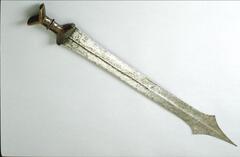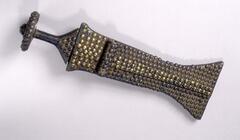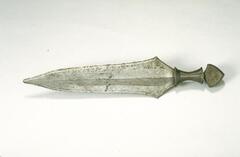45 UMMA Objects
45 UMMA Objects
![This stone dagger has a handle that is divided into two parts, separated from each other by a thinner band. The upper tier is smaller in length than the lower tier, which flares outward as it approaches the end. The tip of blade is broken off. In profile, the blade thickens in the center.<br />
<br />
Carved from stone, this dagger with a two-tier handle is missing only its tip. The cross section of the blade is rhomboid, while that of the handle is shaped like a convex lens. The dagger is of the later two-tier-handled type (<em>idanbyeongsik</em>), meaning that it probably dates from the end of the early Bronze Age or the beginning of the middle Bronze Age. Max Loehr (1903- 1988) was a German art historian specializing in East Asian art who taught at the University of Michigan from 1951 to 1960 as a professor.<br />
[Korean Collection, University of Michigan Museum of Art (2017) p.32] This stone dagger has a handle that is divided into two parts, separated from each other by a thinner band. The upper tier is smaller in length than the lower tier, which flares outward as it approaches the end. The tip of blade is broken off. In profile, the blade thickens in the center.<br />
<br />
Carved from stone, this dagger with a two-tier handle is missing only its tip. The cross section of the blade is rhomboid, while that of the handle is shaped like a convex lens. The dagger is of the later two-tier-handled type (<em>idanbyeongsik</em>), meaning that it probably dates from the end of the early Bronze Age or the beginning of the middle Bronze Age. Max Loehr (1903- 1988) was a German art historian specializing in East Asian art who taught at the University of Michigan from 1951 to 1960 as a professor.<br />
[Korean Collection, University of Michigan Museum of Art (2017) p.32]](/media/W1siZiIsIjIwMjIvMDUvMjUvMjhpaWV3MzJmbV9kZWZhdWx0LmpwZyJdLFsicCIsInRodW1iIiwiMjQweDIwMCJdXQ?sha=d2502c4cf43f3c8e)
Korean (Korean (culture or style))
Polished Stone Dagger
900 BCE – 701 BCE
Museum purchase from the collection of Max Loehr
1960/2.117

Kuba (Kuba (Democratic Republic of Congo style))
Ritual Sword
1895 – 1905
Museum Purchase made possible by the Friends of the Museum of Art
1985/1.157

Japanese (Japanese (culture or style))
Tsuba (sword guard) with design of Kanzan (Chinese, Han Shan) and Jittoku (Chinese, Shihde), two Zen eccentrics
1700 – 1732
Gift of Mr. and Mrs. Robert T. Weston
1978/2.5

Japanese (Japanese (culture or style))
Tsuba (sword guard) with iris design
1775 – 1785
Gift of Mr. and Mrs. Robert T. Weston
1978/2.8
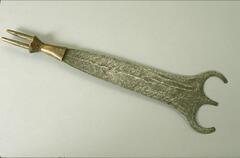
Sengele (Sengele (culture or style))
Sword
20th century
Gift of Susan B. and John F. Ullrich
1998/1.99
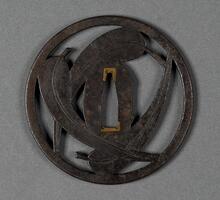
Sadanobu
Tsuba (Sword guard)
17th century
Museum purchase made possible by the Margaret Watson Parker Art Collection Fund
1966/1.103
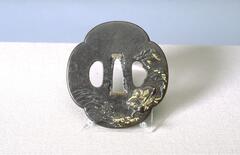
Harunori
Tsuba (sword guard) with inlaid design of samurai on horseback at the shore
18th century
Gift of Mr. and Mrs. Robert T. Weston
1978/2.2
Loading…
